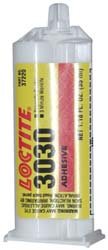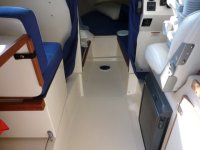Actually, I just finished the watertank repair and reinstallation yesterday. While talking to a friend in Cottonwood (AZ) who owns/runs a RV repair facility, he recommended some stuff called "ProFlexRV" (
www.GeocelUSA.com/r ). He claimed that his repair tech's use this stuff on their "challenging jobs ... it'll stick to anything."
I tried it, and so far, so good. After drying overnight I filled the tank to the brim and NO LEAK! Yeah!
My repair was actually a combination of the ProFlexRV sealant in addition to a newly fabricated locking nut and gasket both
inside and
outside the tank. (Recall that I installed an access port on the tank a few weeks ago, thus I had access to the tank interior.)
The final repair has the filler neck entering the ragged tank hole with a gasket backed by a stiff 1 1/2" nylon washer with a similar arrangement inside, and the whole assembly has sealant between each layer and finally sealant added outside (a few hours later). It isn't pretty; but I think it'll work, and I Never plan to take it apart. (If there is a "next time," I'll just replace the tank.)
When reinstalling the tank I may have discovered how the filler neck came to leak in the first place. Putting the tank in place is not a problem, but when you bend/twist the filler hose (use a heatgun to make it more pliable) the hose seems to apply enough torque that it may have cracked the original plastic-welded-fitting. The angle of the hose coming down from the deck fitting isn't quite right and requires the large, stiff hose to make some unnatural bends (a right angle fitting would have worked better). I opted to just heat and bend the hose into position, and it seemed to work. But I suspect that's how the fitting flange cracked to begin with.
Of course the expedient solution would be to simply not fill the tank to the level of the filler neck; use 12-15 gallons in the twenty gallon tank, and the water level won't even rise to the level of the filler neck; thus, no leaky. But that's not my way;
I prefer to spend a week doing something a person of normal intelligence could address by not filling the tank as high. sigh....
...now let me tell you about the 44 tiny ball bearings in the dinette slider assembly that are released when you dismantle it. On second thought I'll save that story for another day.
Best,
Casey


